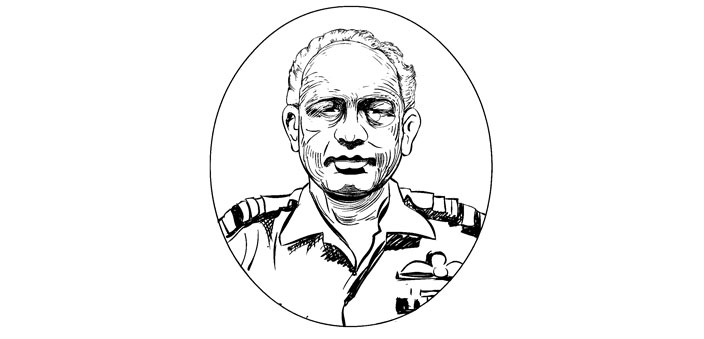A pioneering and exceptional officer (1934-2014)
Partha Kumar Dey was born on 30 March 1934. He was educated in the Bhartiya Indian Military College (RIMC). The Principal of the college had a high reputation, so much so that based on his recommendation Partha was accepted for IAF even before completing his High School. He was commissioned on 17 January 1953. His father S.K. Dey was an ICS officer who was seconded to the International Food & Agriculture Organisation with its headquarters in Rome.
Dey was posted to No. 7 Squadron where he acquired good experience of Vampire 52 fighter aircraft. He then moved to No. 10 Squadron equipped with Vampire NF10 night fighters. Service in this unit demanded night flying usually with the help of instruments only. He was deputed to the Empire Test Pilots School in 1957, and became an exceptional test pilot at the age of 24 years, in the rank of a flying officer- a record for any modern air force. After the course, he was attached to Hawkers for test flying experience, followed by deputation to Folland Aircraft Ltd, Chilbolton, for testing Gnat fighter aircraft. In this assignment, he worked under Wing Commander Suranjan Das. They completed a fair amount of work in the development of this fighter aircraft, the remaining work to be conducted in India. His contribution was greatly appreciated by the Follands.
Test pilot’s assignment demands exceptional flying skills, keen observation and ability to take split second decisions under stress. An incident faced by Dey will bring out these qualities. At Chilbolton, a small probe was fitted on the nose ahead of the cockpit and wind shield. It was done to measure air temperature. It had to be tested at sub-sonic and supersonic speeds as well. It worked well at sub-sonic speed, but at supersonic dive, the aircraft swung to one side. This happened due to disturbance and deviation in the air flow caused by the probe. Dey promptly controlled it and avoided a fatal accident.
He was promoted to Wing Commander, and commanded 8 and 22 Squadrons in 1968. After working as the chief test pilot, he took over as Commandant of the Aircraft Systems Testing Establishment (ASTE) at Bangalore from 1 January 1976 to 1 July 1979, in the rank of Air Commodore. He had a second tenure there as Commandant in the rank of Air Vice-Marshal in 1989. This unit evaluated aircraft and systems, including new aircraft, for induction into service. ASTE’s Air Force Test Pilot School is the fifth such institution in the world, and Dey commanded it with distinction.
The Gnat aircraft had not been fully evaluated in the UK, and the task of evaluating this compact fighter aircraft under tropical conditions was assigned to the ASTE in 1957. The ASTE established various flight test instrumentation laboratories and a detailed report were submitted in three months time. In 1959, Hindustan Aeronautics Ltd. (HAL) began the production of Gnats in India, and Dey was the right choice for testing and developing this aircraft due to his earlier experience. He soon joined HAL and made significant contributions to flight testing and development of new aircrafts like HF-24. He was awarded the AVSM in 1975.
He met Asha Damle, daughter of Medical Officer Air Vice-Marshal Damle, and they got married in December 1961. They had two children, Nikhil and Deepshikha. Nikhil has dedicated his life to the service of poor farmers and artisans in Rajasthan, often collaborating with Aruna Roy, the Ramon Magsaysay Award winner. Deepshikha is the wife of Air Vice Marshal Anil Khosla, presently AOC, Jammu & Kashmir, at Udhampur.
Dey had moved up steadily in IAF, eventually becoming the AOC-in-C of South Western Air Command on 1 August 1988. He was awarded the PVSM in January 1988 for outstanding service in this command. He retired on 31March 1992, and passed away on 10 January 2014.

